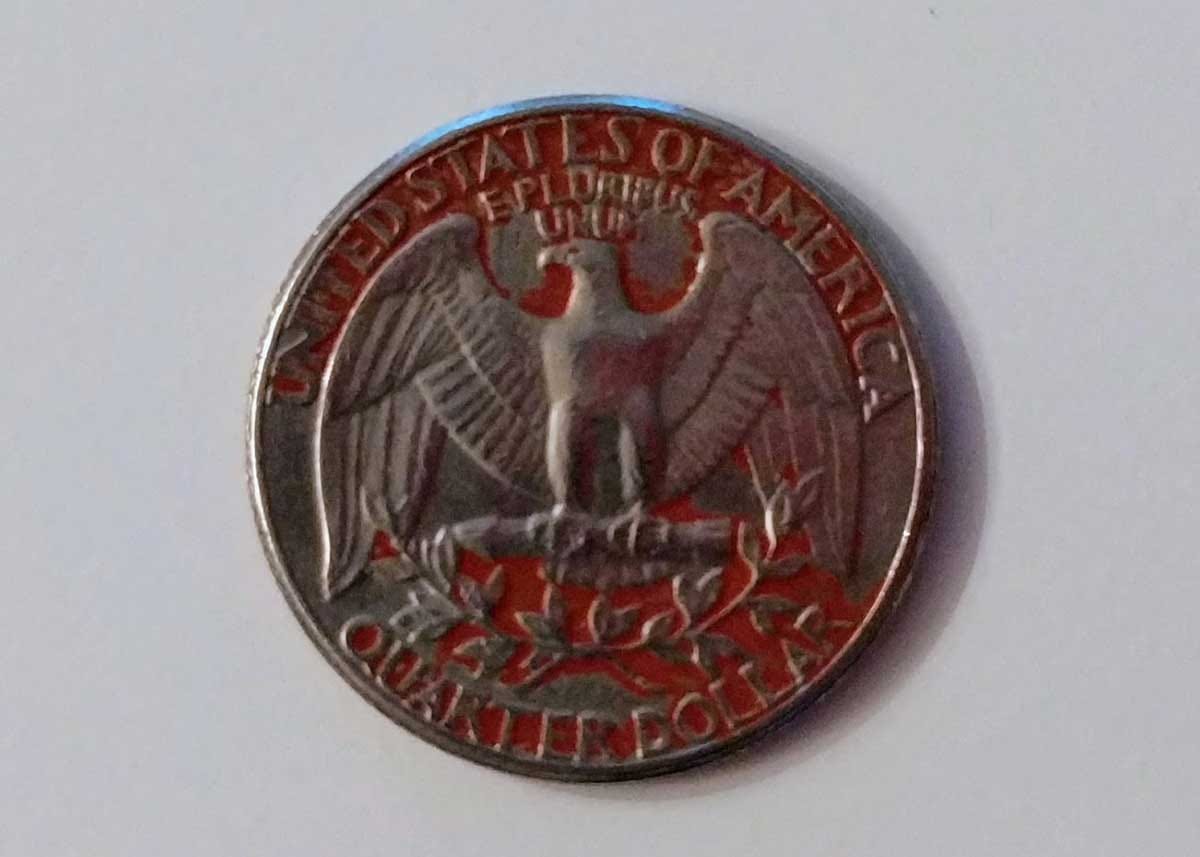The Mystery Of The Red Quarters…Solved!
Did you ever find a quarter painted red and wonder if that red served a purpose? It does.
When I originally thought of writing about red quarters, I had three examples ready to be photographed as accompanying artwork. However, when you have a young son who is fascinated with arcade games, ticket redemption machines, and all manner of gumball dispensers, keeping quarters handy is difficult.
So, just imagine that the photo above is of multiple quarters and not one just a single one.
Have you ever sorted through your change and found an older quarter painted red, or the remnants of red paint that has been worn away during a few decades in someone’s pocket or change jar? Congratulations! There is a good chance that you are holding a piece of arcade history.
Firstly, let me point out that there are a few alternative origins that are possible – but, not as neat as the arcade connection. Red quarters are also used for free laundromats and the occasional jukebox at the local tavern, but with change machines more available in 2017, and the increasing prices of these services, dollar bills are used much more often.
Red quarters are known as “shills” or “house coins.” When I managed an Aladdin’s Castle arcade back in the early 1990s, I called them “freebies.”
Arcade machines are amazing pieces of technology. From the start button to the circuitry, to the joysticks, to the screen and speakers, millions of bits of high-tech electronic signals are bouncing around inside that pressboard cabinet before “Ready Player One” ever appears in colorful, pixilated glory to you.
But, before the credit button can ever be activated, the quarter has to make its way from your pocket through a series of mechanical twists and turns before the game recognizes your offering as a legitimate form of payment. Along the way, there are many places for your quarter to become lodged or even fall through to the coin collection box without giving you a credit to start the game.
If your arcade didn’t have an attendant back then, you usually just kicked or beat the coin door in a futile attempt to make it either accept the quarter – or generously return it to you. This usually never, ever worked.
Arcade attendants were the best people that minimum wage could hire at the time. While many could be trusted to open the front doors on time, most arcade owners did not trust their minions with keys to the coin doors or collection
When a customer complained about not receiving credit for their coin, an attendant would use a red-painted quarter in the slot to make the game work. If it did, the customer could then play their game and smile. If the game still did not work, an “Out of Order” sign would be placed over the screen until a repair technician could render first aid.
When it came time to count the game’s coin box each week, the red quarters would be sorted out from the silver ones and returned to the attendants to use again. They wouldn’t be counted as income, and the arcade owner’s accountant would celebrate and rejoice at the reduction of paperwork.
At Aladdin’s Castle, we also used painted quarters, but only for the Rowe change machine or crane game. Our attendants had access to the coin mechanisms because tokens were used to credit the machines instead of cash – and our accountants rejoiced at the reduction of paperwork.
Why the red paint? Red paint stands out better in a sea of silver coins in the automatic counter, and in many cases, it’s also the only shade of nail polish that a female employee had handy at the time.
The next time you spot a red quarter, and the date on it is from before 1992, there is a very good chance that it was used to make someone’s arcade experience a happy one. Keep the cycle going and use it to credit-up the next video game you come across!




Well that’s certainly a better explanation than whatever was playing out in my head.
That’s a 30 year itch FINALLY scratched.
Great post and I definitely remember red quarters, although they seem to be extinct.